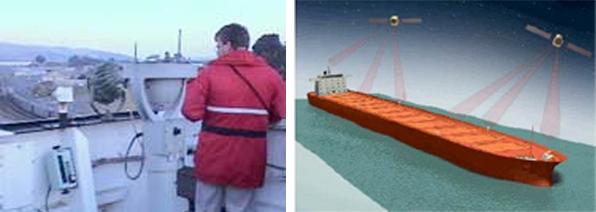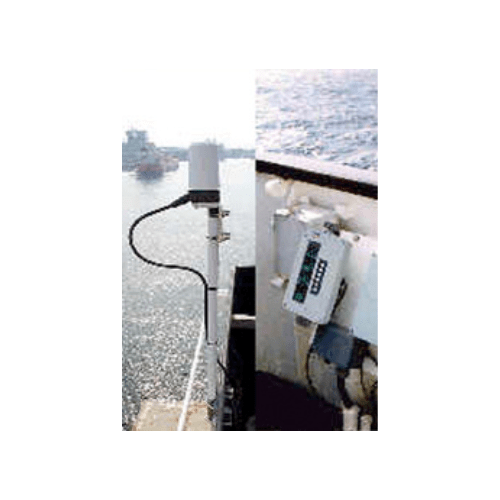SMIDS
Satellite Docking System – SMIDS
The Ships Movement Information Display System (SMIDS) is a cost effective docking system currently installed on a number of vessels, which require highly accurate docking, speed and transit information at all times. It can be used as a direct replacement for a conventional “Doppler Docking System”.
Using satellite signals precision docking maneuvers can be displayed with accuracy better than standard Doppler systems: 0.02 knots.
The installation of a SMIDS removes any concerns normally associated with the operation and upkeep of current Doppler systems.
Satellite (GPS and GLONASS) receivers independently measure bow and stern movements of the vessel over the ground. The bridge wing and wheelhouse displays show heading, transverse and longitudinal speeds.
The advantage of this SMIDS is obvious that it is able to continuously provide precise information during docking, increases the ability to achieve safer docking approaches to shuttle tankers, buoys, jetties and anchorage positions, not effected by water temperature, salinity, cavitations or environmental barrier effects, plus
- No need dry docking – which is required for installing, maintaining or replacing traditional Doppler System;
- Installation during voyage – thus preventing any disruption to vessels operation schedule;
- No hull penetrations in the bottom of the ship – no expensive gate valves for new builds;
- Full utilization of existing ships wiring – when retrofit installation
- Sea Trial not necessary – SMIDS is self calibrating anywhere All these = LOW COST!!!
The picture shows the SeaRiver tanker North Slope docking in California with the aid of SMIDS. The pilot and captain said “Very impressive” as they glided alongside. Masters report that SMIDS tells them what the ship is doing before the eye can perceive it!

The Doppler docking and speed log systems have provided the marine industry with reliable speed information for many years. Their accuracy and indeed their cost is not very much in question. The upkeep and maintenance of these new and ageing speed and docking systems is a serious issue.
Although alien to many people, new maritime technology must not be ignored. We have entered the competitive dimension of the new millennium. Global positioning system technology and its counterparts are no longer “aids” to navigation. They have rapidly developed into navigation essentials that will contribute to the safe passage and operational schedules of the world’s merchant fleets in many years to come.
SMIDS is installed on a number of large tankers currently operating in the Alaska, Arabian and Mexican Gulf areas and also out in the Far East.
Blue Tooth
By using the Blue Tooth option for SMIDS it is now possible to display all the ships navigation and environmental data on a handheld monitor technically known as the Panama Pilot (see left Pic). The SMIDS information is transmitted from the main electronics unit to the Panama Pilot using simple integrating techniques with ships data from other sensor equipment.
The portable handheld monitor can be utilized as a wireless bridge wing docking repeater and when not used for this purpose it can be programmed by the vessels master to access and display bridge transit navigational data whilst he is working in the ship’s office or in the confines of his cabin, effectively having control of the vessel from his desk.
Engine room engineering status information can also be interfaced and displayed in the same manner. Transmitting distances are approximately 200 meters, which is sufficient for precision towing or lightering operations to be accurately monitored by all parties involved in these procedures therefore contributing to greater safety and operational awareness.
The Panama Pilot can be adapted to monitor all types of shipborne data and give instant access to other events, which are being performed simultaneously.

A Conventional Doppler Docking System
THE COST OF SMIDS MAY BE HALF THE OVERALL COST OF A CONVENTIONAL DOPPLER DOCKING SYSTEM
Only a single pair cable is needed from bow to bridge. When replacing an existing Doppler system the existing bow to stern cable can be re-used.
Installations on tankers and dredgers: it has been impossible to make conventional logs and docking systems work well because of the disturbance caused by dredging, propellers and thrusters. SMIDS does not suffer so!

